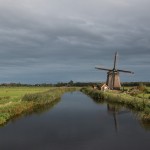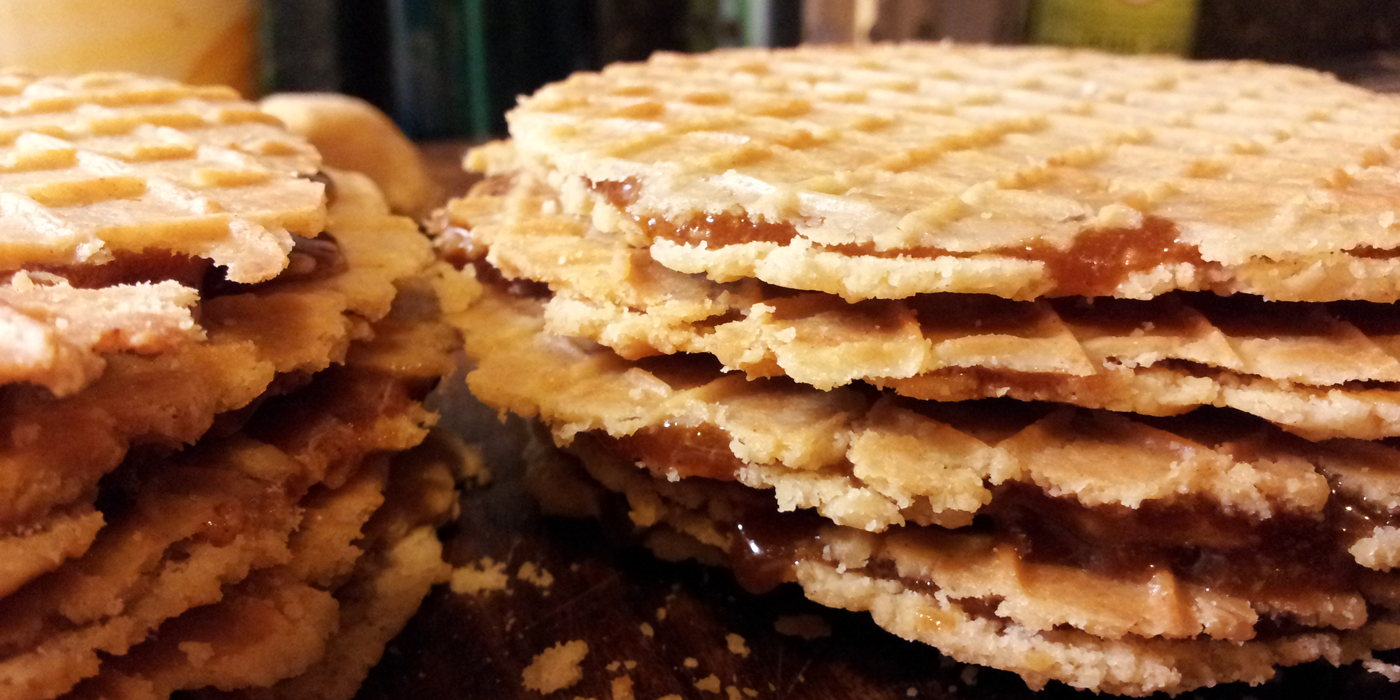As today is National Windmill Day here in the Netherlands, I thought it was only appropriate to discuss Dutch people’s love for these tall, old-fashion, spinny things. Apart from those uncomfortable yellow shoes (come on, you know the ones) there is possibly no other Dutch object as iconic as the windmill.
Not surprisingly, Dutch people’s widespread use of the windmill grew out of two very cardinal Dutch traits: practicality and necessity. We all know this little country has one mortal enemy – W-A-T-E-R – and windmills watermills served as a crucial tool in the ever-present battle of the elements. The Dutch are masters of water control, and poldermolen (dike mills) were used in an attempt to sponge up as much of that liquidy stuff as possible.
There are still over 1,000 windmills left in the lowlands, a far cry from the 10,000+ that used to proliferate the Dutch landscape. Dutch people have taken their love for molens a step further: by living in them! 15% of the mills in Holland are currently being used as homes.
As with any country, items that play a significant role in the culture often make their way into the lexicon. Take the numerous Dutch expressions referring to windmills as proof of their importance and enormous cultural significance:
De molen gaat niet om met wind die voorbij is.
[Literal translation: The windmill doesn’t care about the wind that came before.
i.e. Don’t worry yourself with the past/The past is the past.]
Een klap van de molen gekregen hebben.
[Literal translation: Been hit by a windmill.
i.e. To describe someone who is irrational/not making sense]
Dat is koren op zijn molen.
[Literal translation: That is grist (ground grain) to his mill.
i.e. That which supports/strengthens his own argument]
Tegen windmolens vechten
[Literal translation: To fight with windmills.
i.e. To describe the futilely of a fight/ To fight a losing battle]
Feel free to add more to the list!














Maybe not so much an expression anymore, more a well-known concept:
De Mallemolen van het leven
[Literal translation: The crazy windmill of life
i.e. Life is one crazy ongoing adventure/ride]
In this expression, the ‘Malle-molen’ is a carroussel, not a windmill.
Also: ‘Hij loopt met molentjes’, i.e. is a bit crazy.
If you want to see a lot of windmills go to Kinderdijk (“Children’s Dike: along the river is a dike with lots of mills on it, most people ride the bike along the dike) or to Zaanse Schans (an old village with museums and a lot of mills you can visit).
“Quick, we gotta get rid of this water!”
The second windmill picture has got a wrong subtitle.
The pictured windmill is a wood sawing mill, it is not used for water pumping.
You can spott this by he big barn underneath.
they were built next to water so that they could float the logs to the mill. makin’ water work for us yey!
“Tegen windmolens vechten” is Spanish by origin, though. It’s from the Don Quichote novel, and The more common meaning is, “Fighting non-existing dangers”, as apparantly Don Quichote mistook (spanish) windmills for giants.
hilarious blog! I confirm all of your nr-s…as another expat stuck to work and live in tulipland (this is how I refer to the lowlands:-)))) keep up the humor and good spirit!+great u make us laugh above these things around us!:-)
How about: ‘hij loopt te malen’ (he is grinding) – going over and over things in his head, like grinding grain. And I’m sure both English and Dutch are familiar with the ‘Millstone’ around a person’s neck.
A correct observation by Kjeld Kahn! The windmills made the Golden Age possible! Some dude was clever enough to hook up a windmill to a saw to produce wooden planks in far greater volumes than could be done by hand. That way it was possible to build a huge amount of ships in a (for that age) very short time.
Go to Schiedam for the tallest windmills in the world.
Yes, there is the tallest 😉
I think a more literal translation of “De molen gaat om met wind die voorbij is” would be “The windmill doesn’t go around (turn) with wind that has gone by”. The meaning would be similar to the English saying “Strike while the fire is hot”.
With the industrial revolution of the late middle ages a lot of mills were built througout Western Europe. In surrounding countries watermills were more prevalent, but although the Netherlands have many streams and rivers, height differences were usually not sufficient to power the typical watermolen. Wind however, passed over this flat country unhindered. As a consequence, windmills sprouted up all over the landscape.
A mill, of course, is just a power source. They can be used to saw planks, manufacture paper from wood or textile pulp, grind grains, hammer steel, and also to move water. Windmills are found all over Europe.in many shapes and sizes. Typical for the Netherlands are the rows of windmills that were build to empty the polders and for watermanagement. Today the water is managed entirely with electrical mills, although a few steam mills remain as funtioning museums and as a back up. (Both the pumps and the steam engines are sophisticated and reliable, they only switched powersources for economical reasons. In fact, in the conversion, many steam mills simply changed their power source.)
Kinderdijk is an international monument. De mills on de Zaanse Schans, may be monuments individually, but they were brought together from many places, they weren`t build there.
I’m almost sure the last one ‘tegen windmolens vechten’ has it’s origins in Don Quichote.
Btw, love, love, love this blog! Started reading this morning and just can’t seem to stop myself from coming back for another topic and cracking up about that one! Thank you, you’ve made my day!
Which was meant to say that the origin isn’t Dutch, though the proverb might be.
hij loopt met molentjes (lit: he walks with small mills): which means: he is crazy
hij draait met alle winden mee: (lit: he turns with all winds): he changes his opinion, depending on the person he talks with
alle molens vangen wind (lit: all mills catch wind): each concurrent takes part of the profit
Dat is koren op zijn molen – it’s like grain on his mill
= it is something he likes
Het zit in de molen – It is in the mill
= we’re working on it
Zijn molen maalt niet meer – His mill doesn’t grind anymore.
= his teeth are not well anymore, he has trouble chewing.
Werken als een molenpaard – working like a mill horse
= working really hard
Dat is niet in de haak! – That is not in the hook!
= something is wrong. The hook refers to a hook that should be connected to the blades of the windmill when it turned.
Iemand de wind uit de zeilen nemen – Taking the wind from someone’s sails
= working against someone, stopping someone. I believe it refers back to the sails on the windmill blades that catch the wind.
Wie het eerst komt, die het eerst maalt – Who comes fist, who grinds first [yeah.. I know… don’t take this the ‘wrong’ way]
= The first person gets something, common examples; the first in line gets tickets or the first to ask for the only piece of candy, can take it.
So, there you have it, that were a few other windmill expressions I could think of.
Cheers from a Dutchie who grew up next to a watermill, and yes, I used to have a pair of clogs (= wooden shoes) when I was a kid.
The last one: Wie het eerst komt, die het eerst maalt, is best described with the english saying: the early bird gets the worm.
“Wie het eerst komt, die het eerst maalt – Who comes fist, who grinds first [yeah.. I know… don’t take this the ‘wrong’ way]”
The best way to describe this is by using the english counterpart for this saying: The early bird gets the worm.
De wind uit de zeilen nemen refers to sailboats. While sailing alongside another ship, you can ‘steel’ it’s wind, and lower it’s speed.